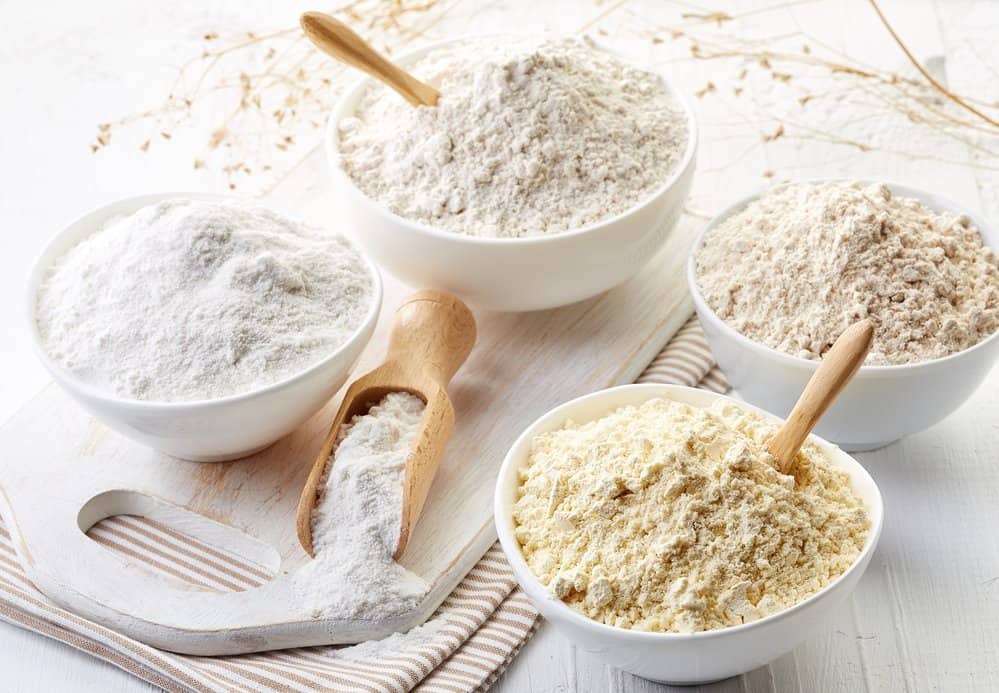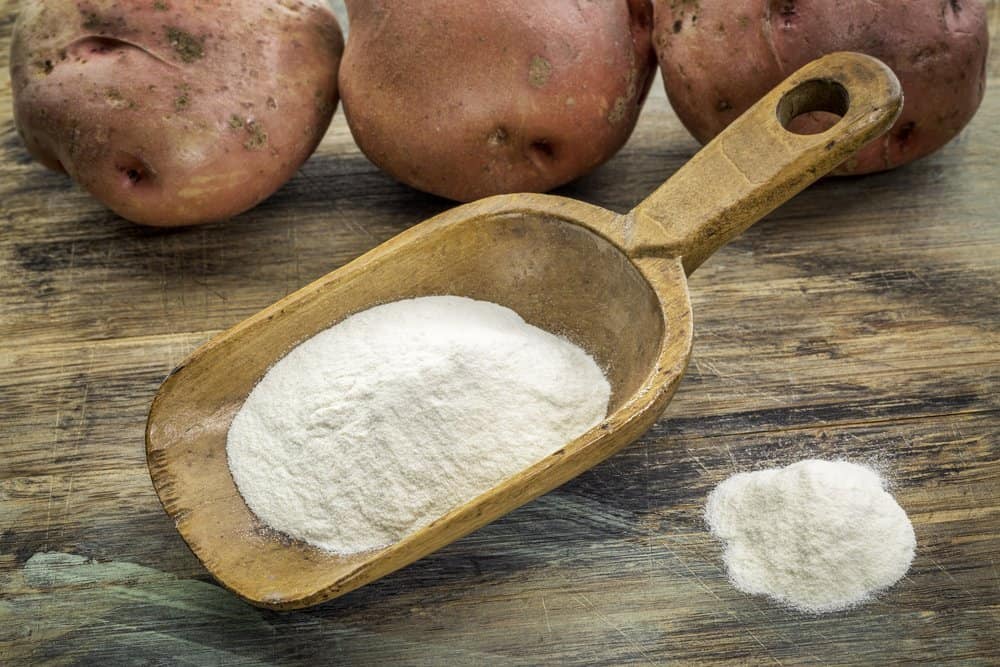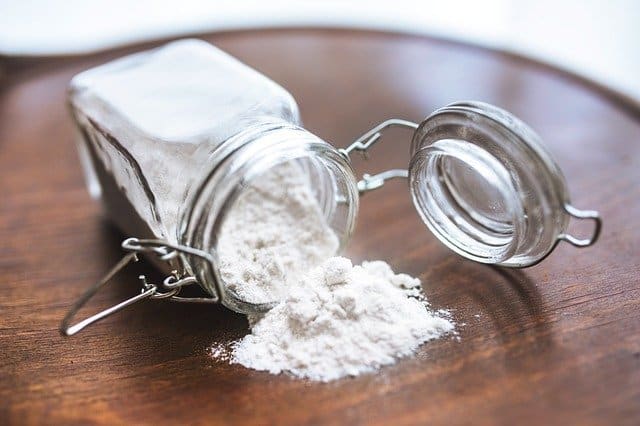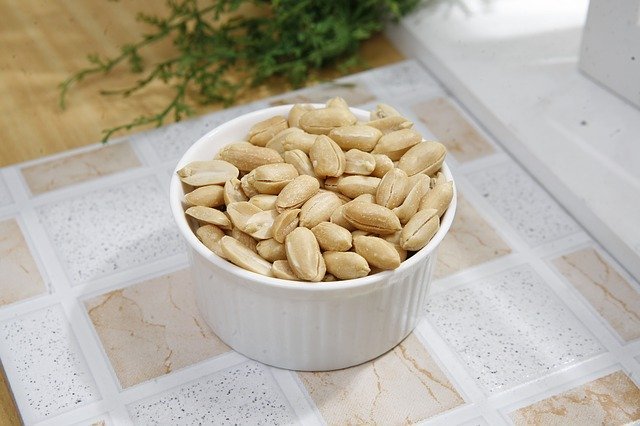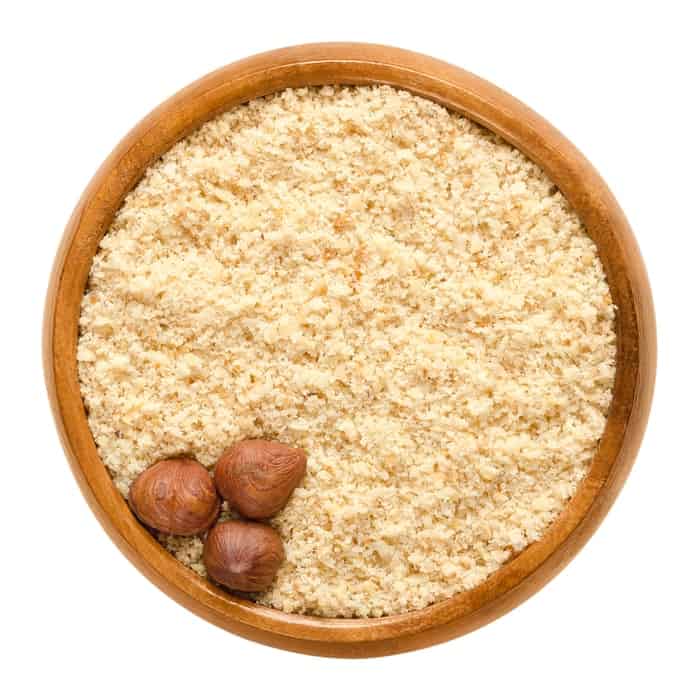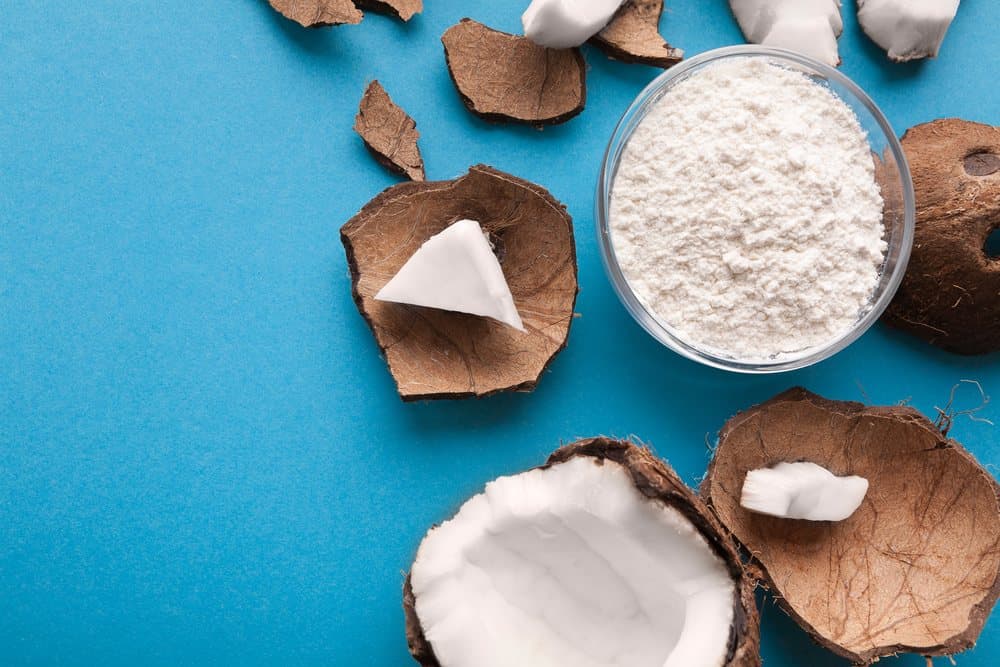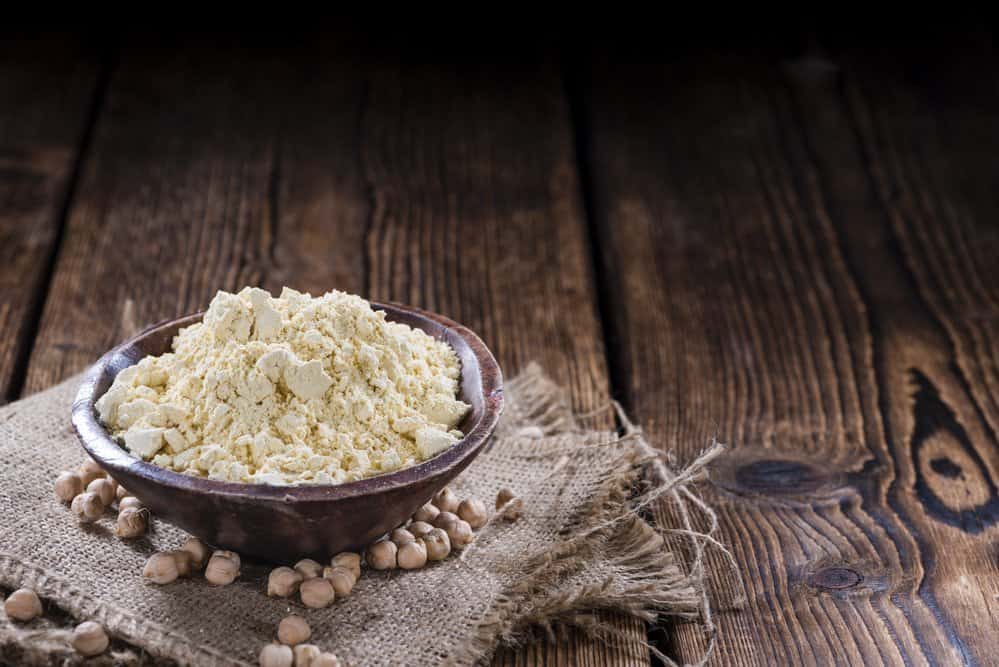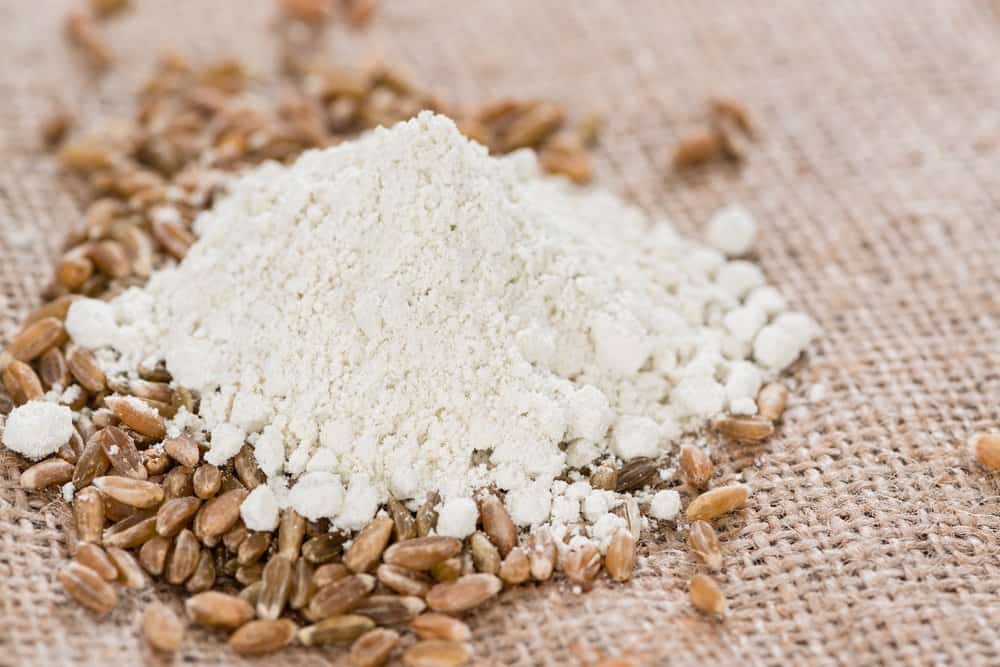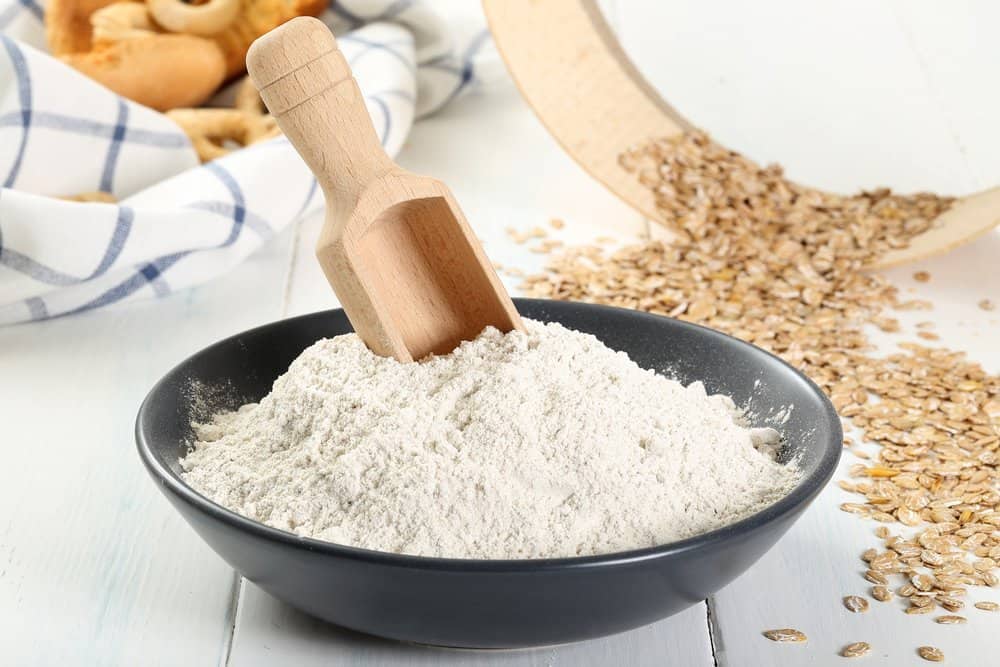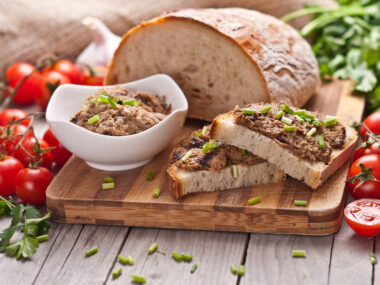Rice Flour is made from ground raw rice and is commonly used for making noodles and pancakes. It can also be used for thickening dishes and making cakes or biscuits. However, rice flour is “gluten-free”, it can’t be used for making leavened bread.
Other than rice flour, did you know that you may substitute it with other types of flour? Potato Flour is also a perfect substitute from Rice Flour. Other substitutes you may use are Tapioca Flour, Peanut Flour, Hazelnut Flour, Coconut Flour, Chickpea Flour, Spelt Flour, and Rye Flour.
In this article, we’ll show you each of the flour’s differences and best uses.
Best Rice Flour Substitutes
1. Potato Flour
This type of flour is made from grinded and peeled dried white potatoes. Just like rice flour, it has a unique and distinct powdery texture from potato starch. Potato flour is commonly used as a combination with wheat flour in making potato bread.
This flour is also gluten-free, a perfect go-to for the health-conscious. This fine starchy flour works well as a thickening agent for dishes such as soups and stews. It naturally enriches the texture of soups and other saucy dishes.
The flour’s content has the ability to act like a sponge where it effectively soaks and lock-in moisture. It makes every baked good perfect as it retains moisture for a long period of time. Most bakers like this flour for its longer shelf life. It also offers soft texture to bread unlike other gluten-free and wheat-based flours.
Bob’s Red Mill Potato Flour is a reliable brand for making bread and other potato-based dishes. Use this for thickening gravies, sauces, and soups. Another recipe you can make is Gluten-Free Potato Bread.
2. Tapioca Flour
The same as Rice Flour, Tapioca Flour is another neutrally flavored and gluten-free type of flour. This flour is made out of finely ground cassava root. This is also one of the cheaper alternatives you can find in the market.
It’s important to note that grocery stores have both “tapioca flour” and “tapioca starch”. Don’t be confused upon picking because they’re both the same. Just make sure that you will not pick pregelatinized tapioca products. It should not be pre-cooked or went to a drying process beforehand. I always pick Bob’s Red Mill, since it’s a trusted brand for tapioca flour.
Tapioca flour has the ability to add a crispy texture to baked goods. Other than that, you may use it in place of all-purpose flour or cornstarch for thickening sauces. The flour is also easy to incorporate with other ingredients when mixing. You don’t even need a mixer to do it.
The perfect recipe for tapioca flours is pies. I like using this when making apple pies or fruit-based pies. It also works well with meat pies. The pie dough tastes crispy and delicious. It compliments any filling you put in your pie.
3. Peanut Flour
This flour is made by processing freshly roasted peanuts and pressing its oils which results from paste to a dry powder texture. The oil pressing process is called “defatting”. You can determine the flour’s fat content by the amount of oil extracted during the process. It could range up to 12-28% fat content.
Peanut flour is quite dense and is also gluten-free like rice flour. Since the flour is packed with essential nutrients such as protein, it adds nutritional value in any dish. It’s often used to boost any recipe’s nutritional value. You can get at least 14-18g of protein from a ¼ cup of peanut flour.
This flour is also diverse. Adding liquids in it will give you a consistency of a peanut-butter like paste. Except that it lacks fat and sugar found in your all-time favorite peanut butter spread. By using this flour instead of other substitutes, it elevates structure on any gluten-free baked goods.
It boasts an exquisite strong taste as well from the concentrated roast peanut flavor. Adding a more complex twist in your typical dish. Its toasty peanut flavor is also perfect for soups and saucy dishes. It adds a flavorful nutty taste to any sauce or dishes.
It’s also important to note that peanut flour and peanut butter powder are not the same. Peanut butter powder is pretty much a peanut butter spread solution where you add water to make a paste. It’s a healthier alternative from common peanut butter as it contains less fat and sugar. Whereas Peanut flour does not contain any fat and sugar.
I usually use Protein Plus Gluten-free Peanut Flour. It’s perfect to use when making cakes and cookies such as peanut chocolate cake and peanut butter cookies. It’s also good for Keto-friendly dishes such as peanut pancakes and brownies. Very low carb and a protein-packed way to enjoy our favorite pastries and desserts.
4. Hazelnut Flour
Another entry from the nut family is Hazelnut. For those who’re not familiar with this variant, it’s pretty much the same as the more common almond flour. Except that it’s made from a different type of nut. Hazelnuts offer a quite different flavor than almonds.
Hazelnuts are skinned nicely before being milled to achieve a perfectly fine and fluffy flour consistency. At times it goes through blanching so that the flour achieves an AP flour color. Hazelnut flour is very rich, nutty, and buttery in flavor. That’s one of the reasons why most cooks opt this over almond flour.
It’s important to note that hazelnut flour has an oil content. When making baked goods, butter and oil measurements might change. Look up online for measurement charts on different types of flours and their uses.
Working with this type of flour can be tricky as well. You may need to mix it with other flours to improve its textural strength. The flour is quite delicate because of its oil and it may burn easily while cooking. Nevertheless, the flour has its own depth and character which contributes more body to baked goods.
Bob’s Red Mills have wide selections of flours including Hazelnut flour. I use it a lot for High Keto Diet Meals. This dense and oily flour is perfect for making healthy cookies and brownies. The oil prevents me from adding more butter or shortening to achieve the right texture. This can be also used for Vegan dishes such as vegan bread and pastries.
5. Coconut Flour
Fresh coconut meats are scraped off the shell and dried. After drying, it’s finely grinded until it reaches a while flour consistency. Coconut flour offers a rich nutty taste and a higher fat content compared to other nut-based flours.
Although it’s nut-based, you can’t easily substitute coconut flour to other nut-based flours. It’s not as diverse as other flours but it offers great nutritional value. It also serves as a perfect substitute for other nut-based flour especially when you’re allergic to peanuts.
Just like potato flour, coconut flour is highly absorbent. Liquid measurements may change when trying to make baked goods in place of all-purpose flour. But once your mixture is perfected, you’ll get that intensely moist baked goods.
Coconut flour is also a budget-friendly alternative compared to its competitors. I usually get Honeyville Coconut Flour if Bob’s Red Mill is out of stock. They don’t have much of a difference and it works well when experimenting on other dishes.
You can make all healthy vegan and keto-friendly dishes from this flour. I especially like making coconut bread and cakes. To add more flavor and texture, I even add fresh coconut meats. Perfect for fillings and toppings. You can also make flatbreads and tortillas from it.
6. Chickpea Flour
Also known as Garbanzo Bean Flour is made from grinded raw chickpeas until it turns into a white flour texture. This type of flour is widely used in the Middle East, India, France, and Italy.
The same as nut-based flours, chickpea flour is very high in protein. It also has added nutrients such as fiber and iron. Just like rice flour, it’s gluten-free.
Its taste is not neutral at all. When mixed with other dishes, it still retains its strong chickpea flavor. Which explains why this flour is perfect to use for savory dishes.
Chickpea flour is best to use when binding ingredients such as patties, fritters, and meatballs. Its high protein content helps to mix way easier. Often used for making batters when deep-frying to add more taste and crisp.
Bob’s Red Mill has a very good Chickpea Flour. I always use it when making a tortilla, naan bread, or flatbread. Using this adds more taste and nutritional value to a typical flatbread. I like making it into biscuits as well paired with hummus or salsa. I also use it for fritters and deep-fried veggies to mix up my healthy meal prep.
7. Spelt Flour
If you haven’t heard about this before, Spelt is an ancient type of grain. It comes from the same grain family such as wheat. It’s often used in place of wheat when having trouble digesting it. Spelt is light and easier to digest.
It’s extracted the same as wheat flour. Freshly harvested whole spelt grains are milled until it turns into a flour. It has a whole grain goodness taste with a mix of slightly bitter, sweet and nutty flavor. Finished products or baked goods offer a hearty and robust flavor that you’ll surely like.
Spelt flour is perfect for substituting all-purpose flour or any whole-grain based flour. Measurements don’t vary as much since spelt flour has the same qualities with regular flours.
Unlike other flour substitutes, whole grain spelt flour has gluten. Keep in mind that the gluten found in spelt flour is not as resistant compared to the common wheat flour. Avoid overmixing your ingredients so it won’t break down easily. Mix your flour at a perfect speed and time to avoid ruining your baked goods.
Bob’s Red Mill Spelt Flour is a perfect brand to use. I don’t know, they just perfectly nailed their flour game. I always like my bread airy and fluffy. That’s why I use spelt specifically for any kind of bread. I even tried using it for making a sourdough bread starter and it works! Its grainy and wholesome taste sets it apart from other types of flour.
8. Rye Flour
Rye, another whole-grain cereal is also related to wheat and barley. But technically speaking, rye actually falls in a “grass family” instead of grain.These grains are also milled to extract flour.
Rye flour compared to spelt or wheat has lower gluten content. Health experts highly recommend this flour for its nutritional value. Its color is darker compared to other flours. It’s also dense due to its low gluten content.
Most bakers pair it with other flours to make more airy baked goods and pastries. It has a distinct strong grainy flavor that we usually want to taste from bread.
There are several types of rye flour: white rye, cream rye, dark rye, and pumpernickel. Most home cooks and bakers use medium rye flour for any baked goods.
This time I recommend Arrowhead Mills’ Organic Rye Flour. The quality is just great and I like the fact that it’s organic. It’s pretty obvious that rye flour is perfect for making bread. However, I surprisingly found out that it also works with sweet baked goods. I tried using it with banana muffins and chocolate chip rye cookies. Another healthy dessert version you should try.
BONUS RECIPE!!
How to Make Homemade Rice Flour Pancakes
Ingredients:
- 1 cup of rice flour
- 2 tbsp sugar
- 2 tsp baking powder
- ½ tsp salt
- 1 egg, lightly beaten
- 1 cup of rice milk
- 2 tsp oil
Directions:
- In a large bowl, mix flour, sugar, baking powder, and salt.
- Make sure it’s mixed evenly and add milk. Mix well until a smooth consistency is achieved.
- Add slightly beaten egg in the mixture together with oil. Blend nicely.
- Rest for at least 30 minutes until bubbles form on the surface. A well-rested pancake mix makes a fluffy texture.
- Heat the griddle with oil and cook on medium heat.
- Serve with maple syrup or fresh berries.
Enjoy!!
